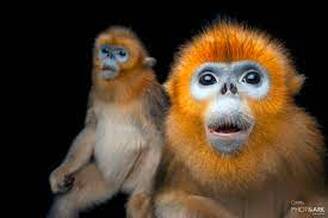| Guiding Thought Question: Look at the picture of the species pictured to the left (you can click on it to enlarge it) and explain what type of environment this particular species is best suited for based on its adaptations. (Be sure to mention at least 3 specific adaptations) Guiding Inquiry: To what degree to animals have Spatial Connections to the landscapes in which they live? Today's Learning Objective: Students will examine the connection between species adaptations and landscape by completing a mapping activity in which they will reflect on the principles of Bergmann and Allen. (3.1.b, 3.3.a) |
|
12 Comments
Ramel
1/24/2023 12:25:04 pm
It’s small nose means there’s less area to frost bite
Reply
koopa
1/24/2023 12:29:03 pm
its suited for an environment with lots of trees like a rainforest because of its long arms and big eyes to see its predators better. its fur will also keep out excess water ?????????
Reply
LOL
1/24/2023 12:29:46 pm
Rain forest because of the colors around it's face. It shows that there is more diversity where it lives. Longer arms and curved wrists to climb trees.
Reply
Tweedy
1/24/2023 12:32:39 pm
this species is best suit for the rainforest because of it's long arms and long legs, and it's fur can help for climbing, and it's long fingers can help with eating and climbing
Reply
Jack B
1/24/2023 12:32:48 pm
I'd imagine a colder biome with vegetation in it.
Reply
emily
1/24/2023 12:33:06 pm
-they have a thick coat to keep them warm
Reply
Lamb
1/25/2023 09:00:51 am
It has a bright fur coat meaning t must be a tropical species of monkey as most animals that are of vibrant color tend to be in warmer climates. It was long arms which makes me believe it lives within trees so it may live in the jungle. It’s fur isn’t as long as some other monkeys I’ve seen so it may be in a place where it’s more humid. I think this monkey lives in the tropical rain forest
Reply
Lucy M
1/25/2023 09:01:08 am
Long arms- allows the monkey to be able to swing from trees (lots of vegetation)
Reply
Kaden
1/25/2023 09:01:40 am
The Golden golden snub nosed monkey (guessing) has small ears, smaller noses, and thicker fur then most other species of monkey, showing that they live in colder climates that are most likely in more highland areas.
Reply
Hannah Cerny
1/25/2023 09:01:41 am
I think that this monkey lives in the rainforest because of the vibrant colors on it's body. It also had long legs and arms which would help it live in the trees. However it might also be somewhere that is colder because its ears and nose are fairly small and it has a lot of fur.
Reply
ww
1/25/2023 09:02:27 am
likely from a rainforest
Reply
Lilly Broady
1/25/2023 09:03:08 am
-It has small ears which can help it from getting things in it or a smaller area of skin that is exposed
Reply
Leave a Reply. |
Ecological Biogeography ForumWelcome to the Forum! Here is where you will be answering your daily warm-up questions. Please do not enter your last name for privacy reasons, and you may use a nickname if you would like (Just make sure Mr. Tredinnick is aware of the nickname you are using). Write out thoughtful responses to the forums on the days they are assigned. If you miss a day please take it upon yourself to complete the Forum you missed. Each Forum has the targeted Learning Objective(s) there so you can see what the focus of the day's class will be. Archives
March 2022
Categories |

 RSS Feed
RSS Feed
